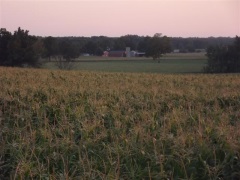 History:
History:
Popcorn was first discovered thousands of years ago by the Guatemalans. It is one of the oldest forms of corn: evidence of popcorn from 3600 BCE was found in New Mexico and even earlier evidence dating to perhaps as early as 4700 BCE was found in Peru. Some popcorn has been found in early 1900s to be a purple color.
The English who came to America in the 16th and 17th centuries learned about popcorn from the Native Americans.
During the Great Depression, popcorn was comparatively cheap at 5–10 cents a bag and became popular. Thus, while other businesses failed, the popcorn business thrived and became a source of income for many struggling farmers. During World War II, sugar rations diminished candy production, causing Americans to eat three times as much popcorn as they had before.
At least six localities (all in the Midwestern United States) claim to be the "Popcorn Capital of the World": Ridgway, Illinois; Valparaiso, Indiana; Van Buren, Indiana; Schaller, Iowa; Marion, Ohio; and North Loup, Nebraska. According to the USDA, most of the corn used for popcorn production is specifically planted for this purpose; most is grown in Nebraska and Indiana, with increasing area in Texas.
Popping mechanism:
Each kernel of popcorn contains a certain amount of moisture and oil. Unlike most other grains, the outer hull of the popcorn kernel is both strong and impervious to moisture, and the starch inside consists almost entirely of a hard, dense type.
As the oil and the water around the kernel are heated, they turn the moisture in the kernel, which has a moisture-proof hull, into a superheated pressurized steam. Under these conditions, the starch inside the kernel gelatinizes, softens and becomes pliable. The pressure continues to increase until the breaking point of the hull is reached: a pressure of about 135 psi (930 kPa) and a temperature of 180 °C (356 °F). The hull ruptures rapidly, causing a sudden drop in pressure inside the kernel and a corresponding rapid expansion of the steam, which expands the starch and proteins of the endosperm into airy foam. As the foam rapidly cools, the starch and protein polymers set into the familiar crispy puff. Special varieties are grown to give improved popping yield. Some wild types will pop, but the cultivated strain is Zea mays everta, which is a special kind of flint corn.





